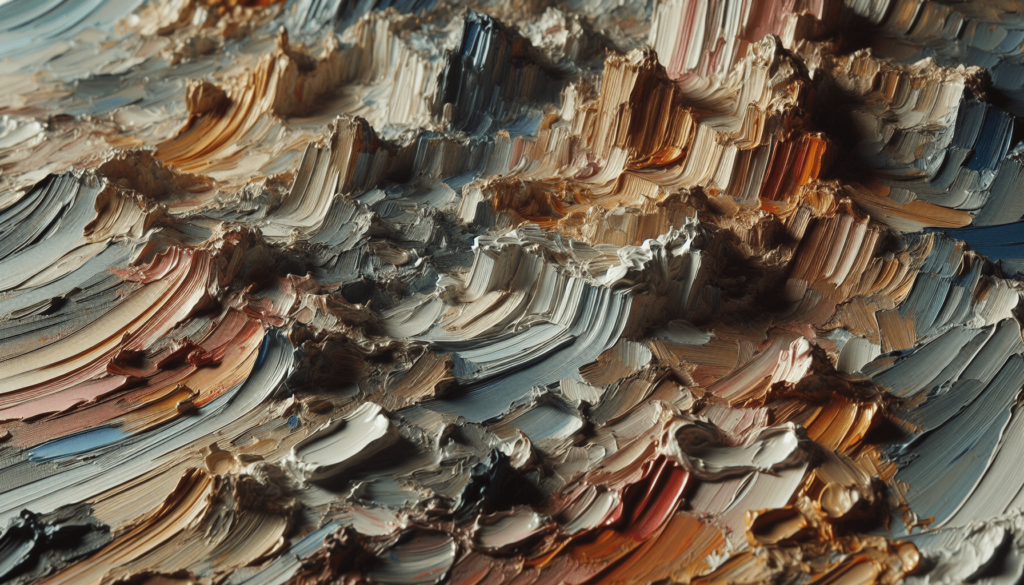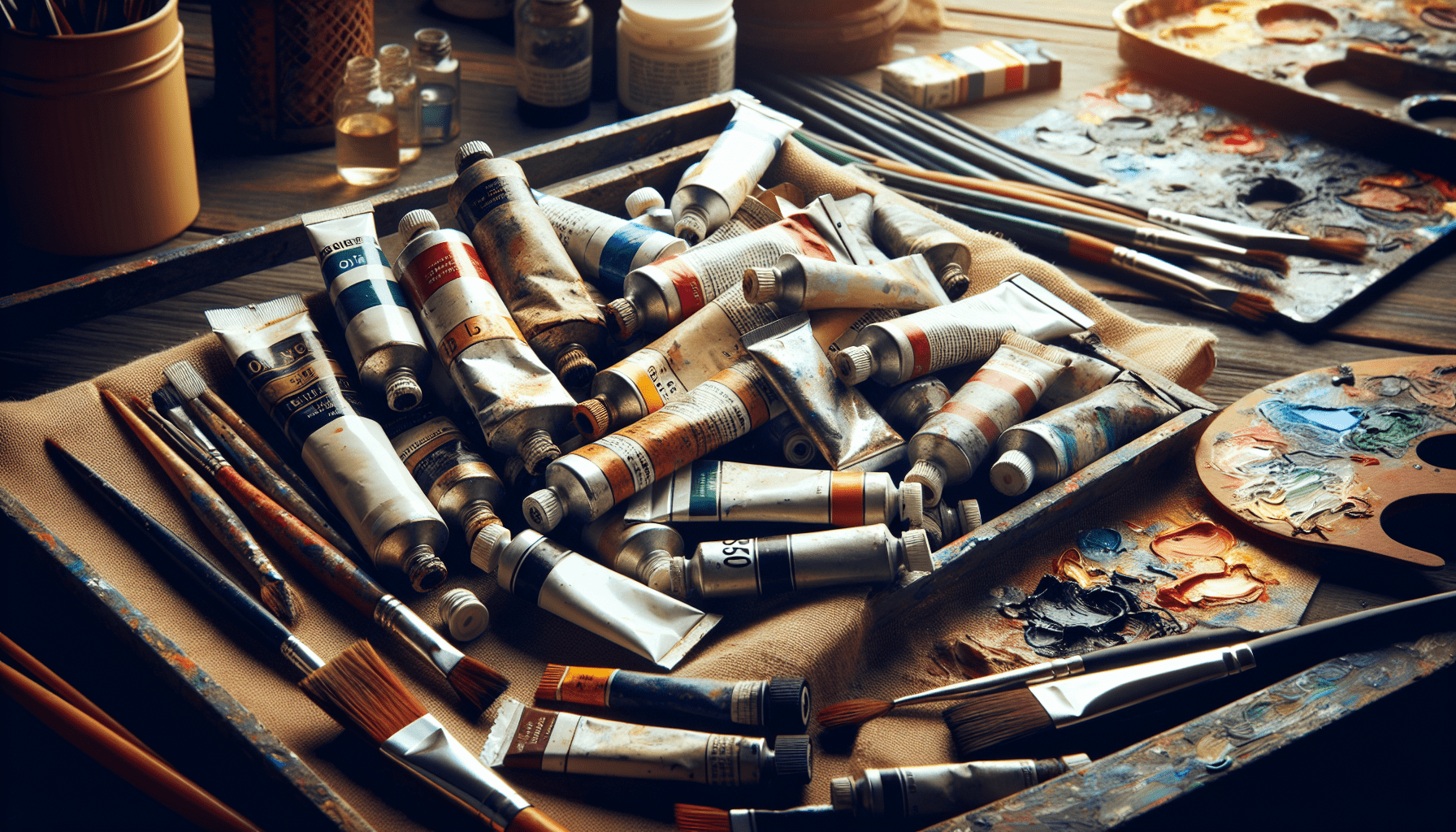In the art world, distinguishing an original oil painting from a reproduction requires a keen eye and a methodical approach. As you delve into the nuances of artwork verification, you will explore crucial aspects such as examining the texture, scrutinizing the brushstrokes, and identifying the age of the materials used. Additionally, provenance documentation plays a significant role in authenticating artwork. By acquainting yourself with these essential techniques, you will enhance your ability to accurately determine the authenticity of oil paintings, thereby preserving the integrity of your collection. Have you ever stood before an oil painting and wondered if it was an original? As an appreciator of fine art, distinguishing between an original and a reproduction can significantly enhance your experience and ensure that your investment is worthwhile. This guide delves into identifying the pivotal elements that can help you ascertain the authenticity of an oil painting. With a combination of historical knowledge, technical inspection, and an understanding of the artist’s techniques, you can confidently determine if an oil painting is original.

Understanding the Importance of Authenticity
Why It Matters
Authenticity in an oil painting not only represents the true artist’s work but also affects the painting’s value, provenance, and historical significance. Collectors, investors, and museums highly value original works of art because they hold intrinsic cultural and financial worth that reproductions cannot match.
Historical and Monetary Value
Original oil paintings often showcase the artist’s true brushstrokes, composition, and color accuracy, aspects vital for cultural heritage and artistry. These elements contribute to the painting’s historical and monetary value. Authenticity is paramount because:
- Cultural Significance: Original works contribute to our understanding of historical contexts and artistic movements.
- Investment Potential: Authentic paintings generally appreciate in value, making them valuable assets.
- Intellectual Property: They preserve the integrity and legacy of the artist.
Technical Examination of Oil Paintings
Inspecting the Canvas and Materials
An essential step in determining originality is examining the materials used. Authenticating the canvas, paint, and other materials can provide substantial clues about the painting’s authenticity.
Canvas
Original paintings often reveal signs of age and usage. When examing the canvas:
- Age Indicators: Look for natural aging signs like yellowing and brittleness.
- Material: Historic canvases were made from natural fibers like linen or cotton. Modern reproductions may use synthetic materials.
Paint Layers and Texture
Analyzing the paint layers and texture can provide insight into whether a painting is an original or a copy.
- Paint Thickness: Originals often have varied thickness due to the artist’s brushwork.
- Visible Underlayers: Paintings created by the old masters often show underdrawings or preparatory sketches.
| Indicator | Original Sign | Reproduction Sign |
|---|---|---|
| Canvas Material | Natural fibers (linen, cotton) | Synthetic materials |
| Aging of Canvas | Yellowing, brittleness | Almost new appearance |
| Paint Thickness | Varied, textured | Smooth, uniform |
| Visible Underlayers | Present | Absent |
| Brushstrokes | Unique and varied | Repetitively uniform |
Frames and Mounting
Frames and mounting methods can also indicate the painting’s authenticity. An original frame may show signs of wear and stylistic elements appropriate to its time period.
- Frame Style: Ensure the frame style matches the era of the painting.
- Wear and Tear: Original frames often exhibit age-related wear such as patina and minor damage.
Signatures and Provenance
An artist’s signature is a critical indicator of originality, but it is not foolproof.
Signature Analysis
- Placement: Authentic signatures are usually placed naturally within the composition.
- Style: Compare the signature’s style with known examples of the artist’s work.
- Aging: An old painting should have a signature that appears aged and consistent with the rest of the piece.
Provenance Documentation
Having a documented history or provenance can significantly support a painting’s authenticity.
- Ownership Records: Verify the lineage of ownership through auction records, sales receipts, and certificates of authenticity.
- Exhibition History: An exhibition history can provide additional proof of originality and authenticity.
| Provenance Aspect | Description |
|---|---|
| Ownership Records | Chains of previous ownership and transactions |
| Certificates of Authenticity | Official documents confirming authenticity |
| Exhibition History | Records of past exhibitions |
Stylistic Analysis
Identifying Technique Consistency
Understanding an artist’s distinctive style and techniques is an invaluable method for recognizing an original painting.
Brushwork and Technique
- Brushstrokes: Evaluate the brushstrokes for consistency with the known techniques of the artist.
- Color Palette: Compare the color palette used in the painting with the color schemes typically used by the artist.
Subject Matter
The subject matter can offer vital clues about the painting’s origin:
- Theme: Consider whether the theme aligns with the artist’s known subject preferences.
- Composition: Examine the composition structure. Artists often have unique compositional styles.
Art Historical Context
Consider the period in which the painting was created:
- Art Movements: Compare the painting’s characteristics with those of the art movement during the time it was purportedly created.
- Regional Styles: Some styles and techniques are region-specific. Analyze if the painting aligns with these regional characteristics.
Scientific Methods of Authentication
Infrared Reflectography
Infrared reflectography (IR) allows for the examination of underdrawings and preliminary sketches hidden beneath the surface layers of paint.
X-ray Fluorescence (XRF)
XRF technology helps identify the elemental composition of the pigments used in the painting. This information can reveal if modern pigments not available during the artist’s era were used, suggesting a non-original work.
Carbon Dating
For artworks on organic materials like canvas or wooden panels, carbon dating can determine the age of the material, although this method focuses on the substrate rather than the painting itself.

Consulting Experts
Professional Art Appraisers
Professional appraisers specialize in evaluating the authenticity and value of artworks. They have access to extensive databases and possess the expertise needed for an accurate assessment.
Art Historians and Academics
Art historians provide critical insights into the historical context and stylistic aspects of paintings. Their knowledge can significantly contribute to determining authenticity.
| Expert Type | Specialization |
|---|---|
| Art Appraisers | Valuation and authenticity assessment |
| Art Historians | Historical context and stylistic analysis |
| Conservators | Technical examination and restoration insights |
Conclusion
Identifying the originality of an oil painting is a multifaceted task that requires a blend of technical examination, stylistic analysis, and historical research. By meticulously inspecting the materials, techniques, and provenance, you can form a well-rounded understanding of a painting’s authenticity. Employing scientific methods and consulting experts further bolsters the accuracy of your assessment.
Final Tips
- Always cross-reference your findings with reputable sources.
- Document your assessment process meticulously.
- When in doubt, seek professional opinions from appraisers and historians.
By adhering to these guidelines, your journey into the world of oil paintings will be both enriching and informed, ensuring that you can confidently distinguish between originals and reproductions.



